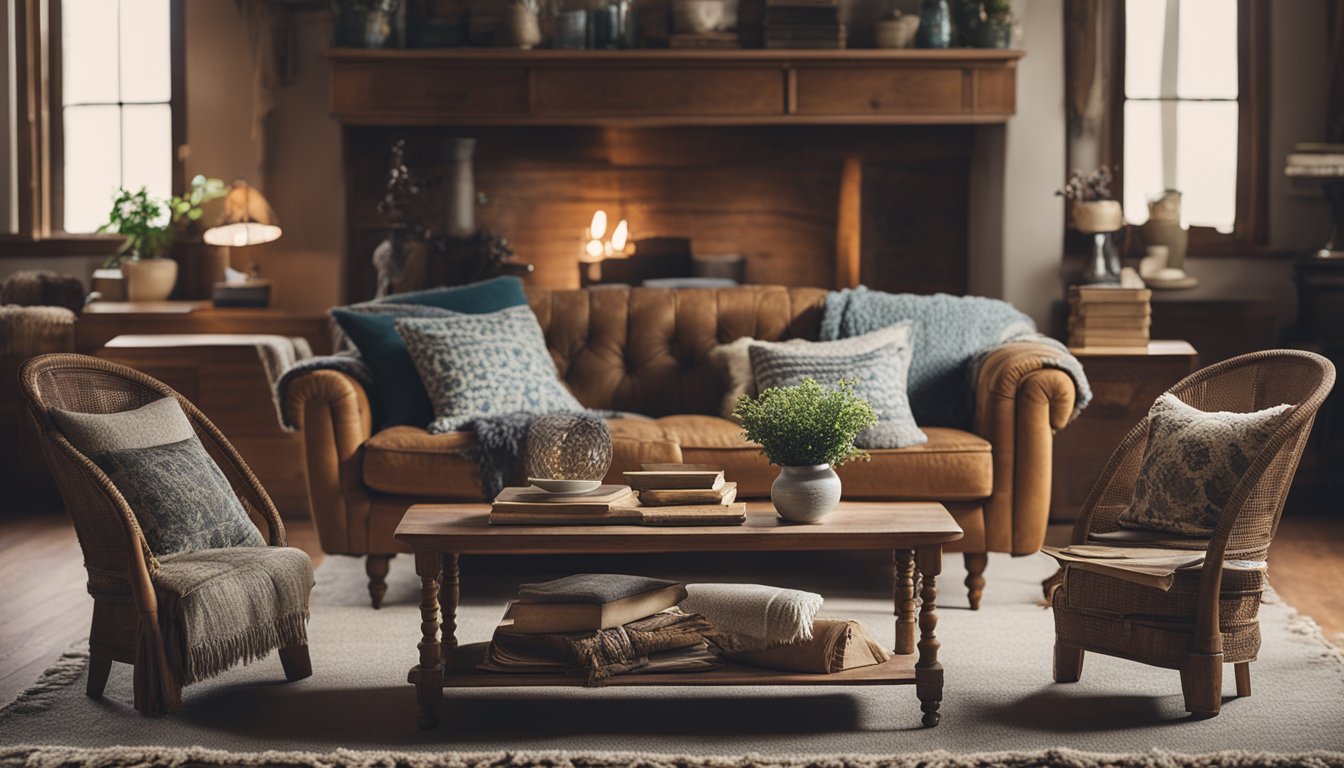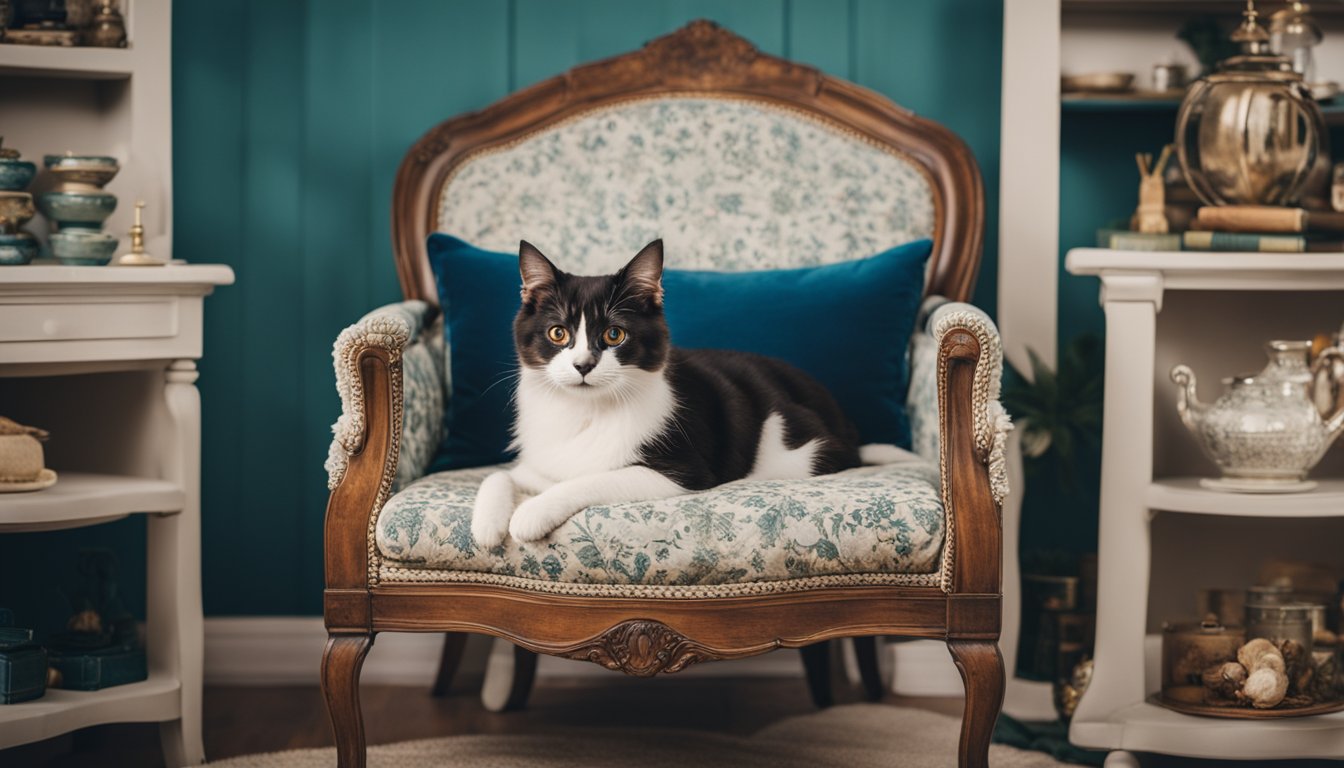Late updated: 23 Apr 2025 09:04
Written by: Daniel Harper
Creative Reuse Ideas For Vintage Home Furniture: Transforming Timeless Pieces with Style
Breathing new life into vintage home furniture can transform spaces with character and history, blending timeless elegance with modern style. In our world of creative recycling, there are endless ways to upcycle cherished pieces, turning an old cabinet into a chic bar or a weathered dresser into a stylish sink vanity. By embracing innovative methods, we can create unique and functional pieces, ensuring sustainability by extending the life of furniture.

Vintage pieces are not just about transformation; they hold stories and memories. Repurposing these items allows us to preserve their essence while adapting them to contemporary needs. From repainting side tables for a pop of colour to crafting intricate home accessories, the possibilities for these pieces are only limited by our creativity.
Key Takeaways
- Vintage furniture can be creatively repurposed to blend tradition with modernity.
- Simple updates like repainting or converting functions add longevity and style.
- Creative recycling promotes sustainability and showcases personal style.
Top Creative Reuse Ideas For Vintage Home Furniture
Revamping vintage home furniture offers sustainable ways to elevate our living spaces. We can transform forgotten or outdated pieces into functional and stylish home décor with the right approach.
Transforming Dressers Into Unique Kitchen Islands
Vintage dressers, with their classic charm, can be ingeniously transformed into unique kitchen islands. By removing the upper drawers, we can create open shelving for easy access to kitchen essentials.
Adding a butcher block or granite top enhances the durability and aesthetic. Painting the dresser with a coat of bold, modern colour helps integrate it seamlessly into contemporary kitchens while preserving its antique allure. We can further accessorise with brass handles or ceramic knobs for extra style points.
Repurposing Coffee Tables For Modern Home Décor
Old coffee tables, often seen in thrift stores, hold untapped potential for modern home décor. We can refinish or paint an old coffee table to match our living room's theme, giving it a new lease of life as a statement piece.
For something different, a two-tier coffee table can become a multi-functional display unit. Using decorative trays or simple DIY dividers, we can organise the lower tier for magazines or remote controls while showcasing chic ornaments above. Through minor modifications, we can ensure that these tables serve both practical and aesthetic purposes.
Using Vintage Chairs As Stylish Plant Stands
Vintage chairs, especially those with intricate designs, can be creatively upcycled into stylish plant stands. By repainting a chair in a weather-resistant finish, we can create a durable structure that complements any garden or indoor space.
To begin, placing a potted plant on the seat elevates the greenery, adding height and different layers to a plant display. For an added touch, securing multiple smaller pots to the back of the chair creates a vertical garden effect. This simple yet effective reuse of vintage chairs introduces a touch of nostalgia and greenery to our surroundings.
Easy Accessories And Soft Furnishings From Vintage Pieces

Incorporating vintage elements into our home decor can give a room character and charm. By creatively recycling old furnishings, we can craft unique accessories and soft furnishings that offer both beauty and sustainability.
Creating Decorative Pillows With Reused Fabrics
One effective way to reuse materials from old furniture is in the creation of decorative pillows. We can scout thrift stores for vintage textiles or repurpose fabric from outdated curtains, tablecloths, or even worn-out upholstered furniture.
Selecting fabrics with varying textures and patterns contributes to an eclectic and interesting look. Old floral prints or retro patterns could invigorate a modern space, while muted tones might blend seamlessly into existing decor.
Once we've sourced our materials, sewing simple square or rectangular pillowcases becomes the next step. Adding embellishments like vintage buttons or lace can further enhance their appeal. This project is a designed exercise in upcycling, where we blend time-honoured textiles into new, functional accessories.
Turning Old Furniture Parts Into Wall Art
Old furniture parts can often become a creative canvas for wall art. Elements such as chair legs, headboards, or even drawer sides can be transformed into striking decor pieces.
By applying a fresh coat of paint or using sandpaper to achieve a distressed look, these pieces can complement various interior styles. For example, lightweight wood pieces can be adorned with hooks to serve as an artistic yet practical coat rack.
Meanwhile, iron or metal elements might be painted in bold colours and grouped together for a vibrant display. The key here is to view these vintage parts not merely as remnants of furniture but as components of our new design vision.
The beauty of this approach is that we not only breathe new life into old materials but also craft something entirely unique, reflecting our personal style.
Frequently Asked Questions

Exploring creative ways to transform vintage furniture offers both aesthetic and functional benefits. From dressers to old tables, each piece provides unique opportunities for creativity and renewal.
How can one transform an old dresser into a stylish piece for a modern home?
We can easily refurbish an old dresser by repainting it in vibrant or neutral shades to fit contemporary styles. Changing the hardware to modern handles or knobs can enhance the look further. Adding a sleek finish such as gloss or matte can provide a refined touch that blends with modern interiors.
In what ways can vintage chairs be creatively repurposed for new uses?
Vintage chairs can be reinvented by reupholstering them with fresh fabrics. This change breathes new life into the piece while maintaining the charm of its original structure. Alternatively, we could use a chair as a plant stand or create a unique shelving unit by adding wooden boards.
What process would you suggest for a beginner interested in upcycling vintage furniture?
For beginners, starting small with a manageable project is key. Begin by sanding the piece to remove old finishes, then choose paints or stains to match your desired look. We recommend joining community workshops or online forums where you can find tips and encouragement from experienced upcyclers.
Could you provide some examples of vintage furniture that have been successfully upcycled?
Examples of successful upcycling projects include transforming an outdated cabinet into a chic bar, or turning a wooden sideboard into a bathroom vanity. Vintage trunks have been upcycled into coffee tables with added storage, preserving their character while gaining functionality in today's homes.
What are innovative ideas for repurposing vintage wooden tables?
With wooden tables, we can explore options like cutting down a large dining table to create smaller side tables or desks. Another idea is using table tops as wall art or headboards. Adjusting the height of a table by altering the legs could also adapt it for different purposes, such as a console table.
Where might one find inspiration for repurposing old bookcases into functional home decor?
Inspiration for repurposing bookcases can be found in home decor magazines, online platforms like Pinterest, or visiting local craft fairs. By observing these sources, we can gather ideas on turning bookcases into items such as unique room dividers, or creating a cosy reading nook by adding cushions and lighting.
